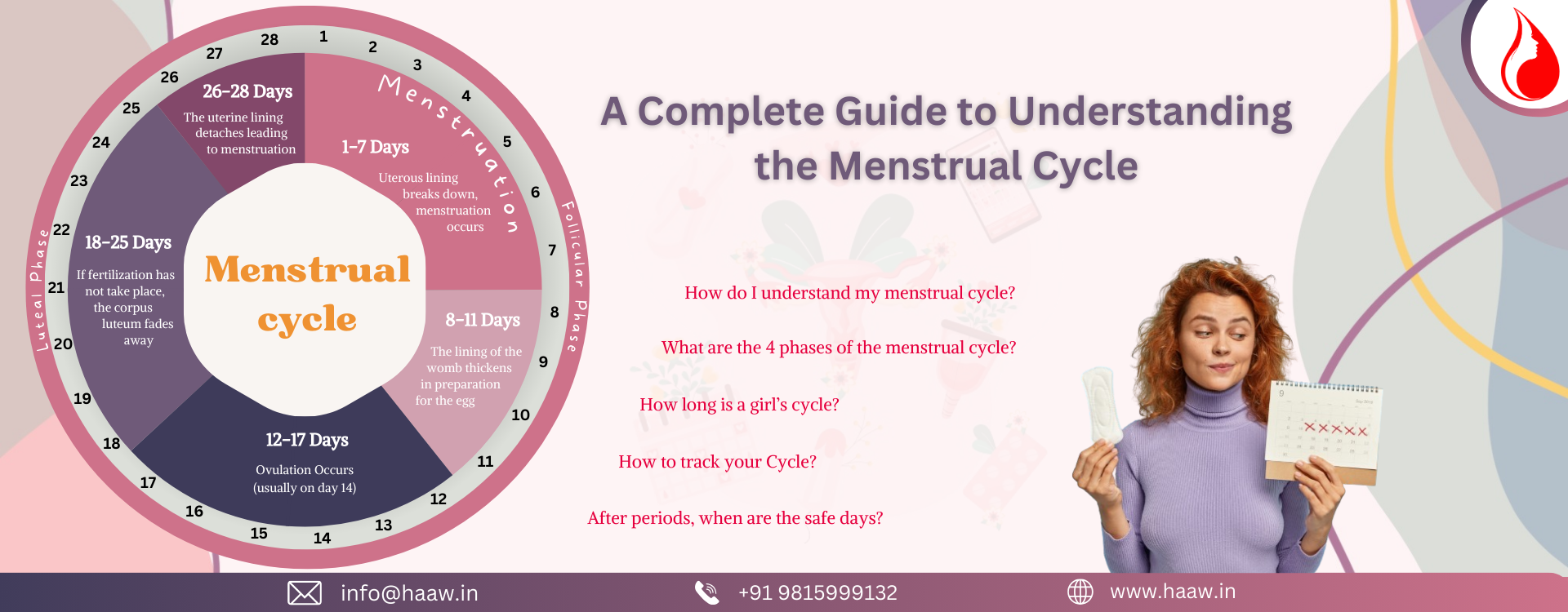
Every person who has menstruation needs to understand their menstrual cycle. It’s a normal process that causes your body to go through several changes every month.
How do I understand my menstrual cycle?
The menstrual cycle is a fundamental aspect of reproductive health for individuals with ovaries. It is a complex, rhythmic process governed by hormonal changes that occur in the body each month. A lot of people might not be completely aware of the many details of the menstrual cycle, despite how important it is. We will explore the different stages of the menstrual cycle, the hormones involved, typical symptoms and disorders, monitoring techniques, and how lifestyle choices can affect this natural process.
What are the 4 phases of the menstrual cycle?
Although it varies from person to person, the menstrual cycle normally lasts 28 days. It is separated into four primary stages: luteal phase, ovulation, follicular phase, and menstruation.
- Menstruation: A decrease in estrogen and progesterone levels causes the endometrium, the lining of the uterus, to shed during menstruation, the first stage of the menstrual cycle. Menstrual bleeding results from this shedding, which usually lasts three to seven days. Menstrual cramps, bloating, and mood swings are common symptoms that influence how this phase is experienced overall.
- Follicular Phase: When menstruation begins, the follicular phase begins and lasts until ovulation. Follicle-stimulating hormone (FSH), which starts the development of ovarian follicles, is produced by the pituitary gland during this phase. Meanwhile, the endometrium thickens in preparation for a possible fertilized egg implantation as hormone levels rise.
- Ovulation: An important stage in the menstrual cycle, ovulation usually occurs in the middle, usually between days 12 and 16. A rise in luteinizing hormone (LH) causes the ovary to release a developed egg, which starts this process. After ovulation, the egg travels via the Fallopian tube to where it may be fertilized by sperm, if sexual activity has taken place during this window of opportunity.
- Luteal Phase: The luteal phase, which lasts until the following month, starts after ovulation. The corpus luteum, which produces progesterone to preserve the endometrium, is the result of the burst follicle. Menstrual shedding is triggered by lowering hormone levels in the absence of fertilization, which starts a new cycle.
How long is a girl’s cycle?
A menstrual cycle can last anywhere from 21 to 35 days, depending on the individual. Although periods are typically 28 days long, they can be shorter or longer. Monitoring your cycle is crucial if you want to know how regular it is and when your next period will occur.
How to track your Cycle?
Monitoring your menstrual cycle might provide important details about your fertility and reproductive health. There are multiple apps and online platforms that help to track your menstrual cycle. One of the apps named “HAW” is also on its way to help your menstrual cycle easily and track your periods. Log your first day of menstruation to get started. Based on the length of your cycle, the app then forecasts your reproductive window, ovulation date, and next period. You can also log symptoms like cramping and mood swings. Updates to the app regularly guarantee precise forecasts and make it simple for you to stay informed about your reproductive health.
After periods, when are the safe days?
Due to the decreased likelihood of ovulation, the days right after your menstruation are usually seen as safer for unprotected intercourse. But it’s important to keep in mind that every person has a unique cycle, and ovulation can happen at any time. It is advisable to take contraception regularly or to constantly monitor your cycle to determine when you are fertile.
To sum up, it is essential for those who menstruate to learn about the menstrual cycle. Understanding these ideas, which include the four phases of menstruation (follicular, ovulation, luteal), different cycle durations, and fertile windows, enables people to take charge of their reproductive health. Understanding the menstrual cycle helps make educated decisions and enhances general well-being, whether through tracking applications like “Haw” or just paying attention to physical indicators.